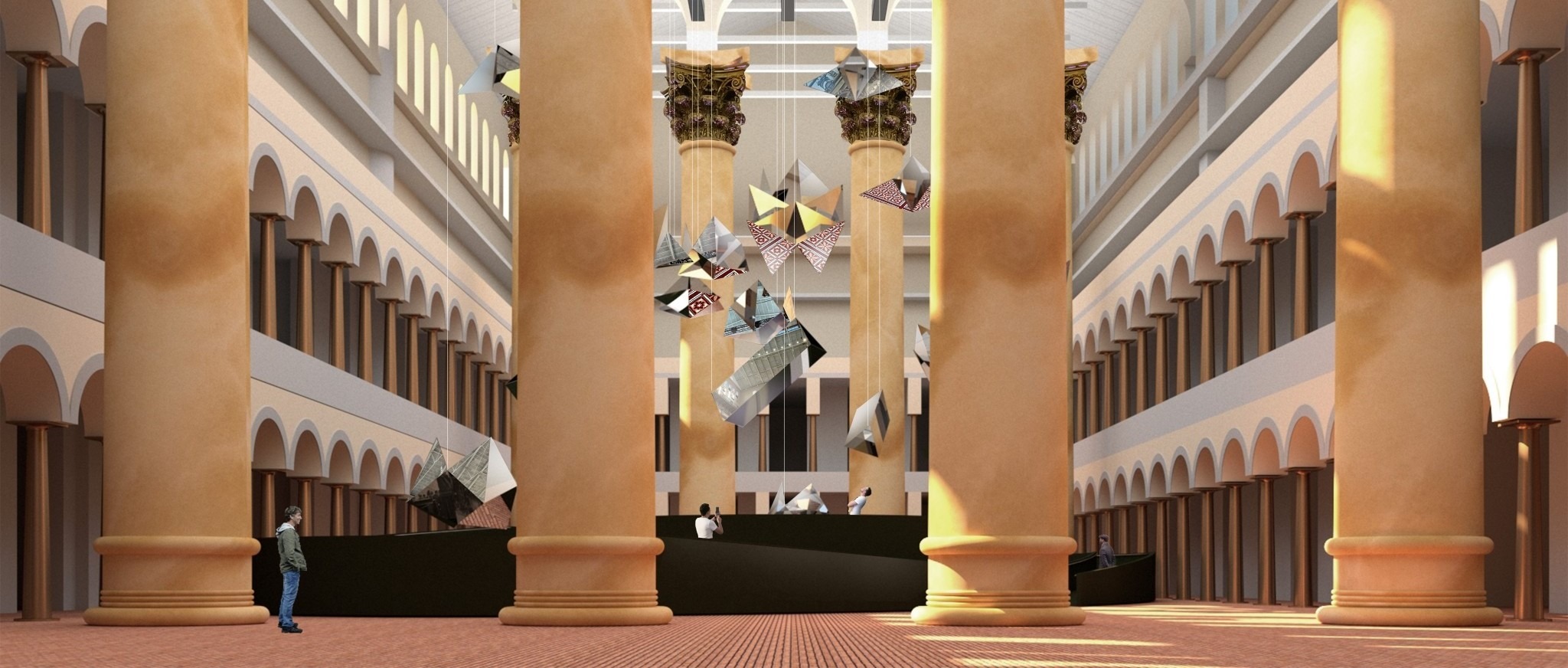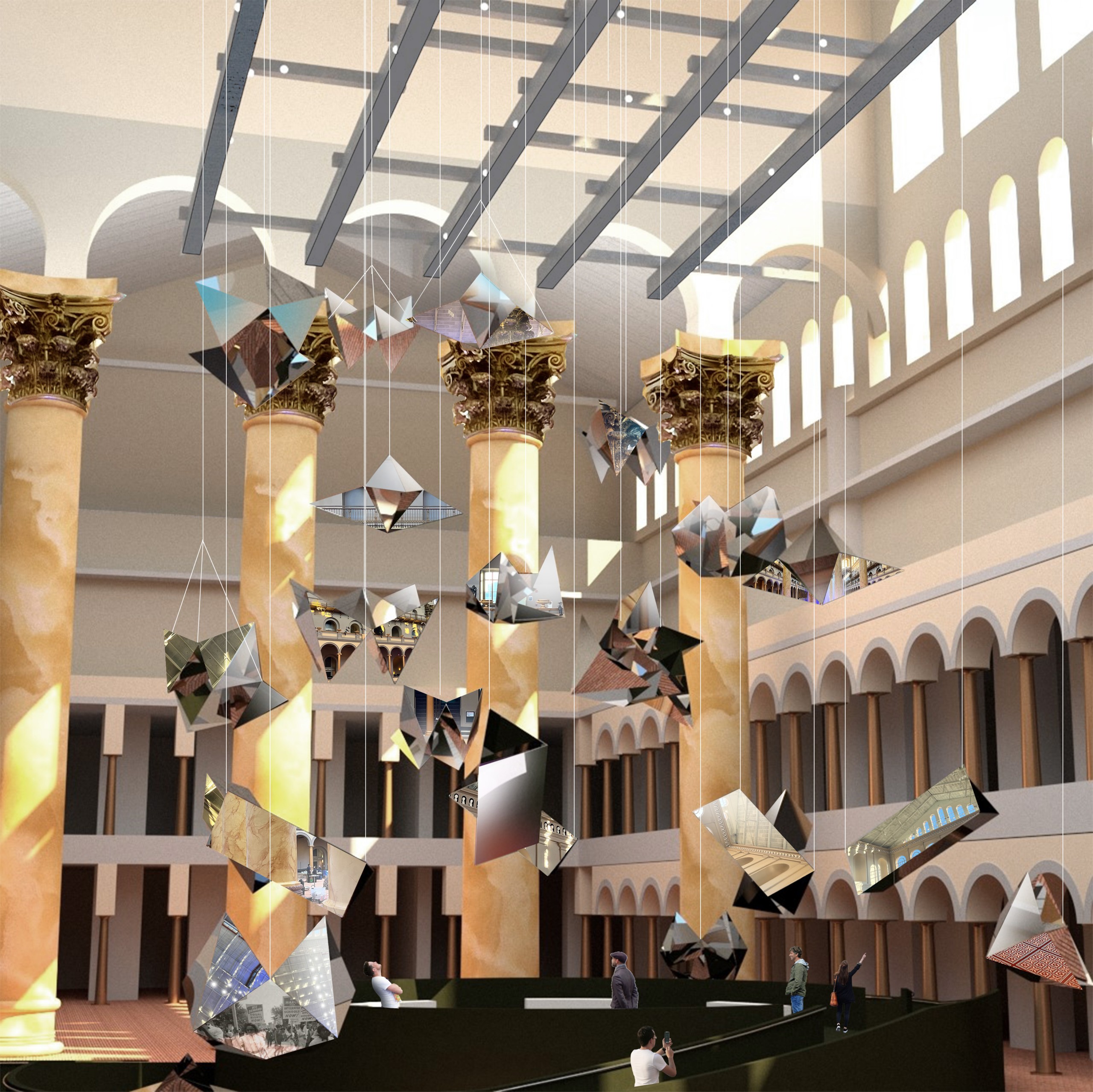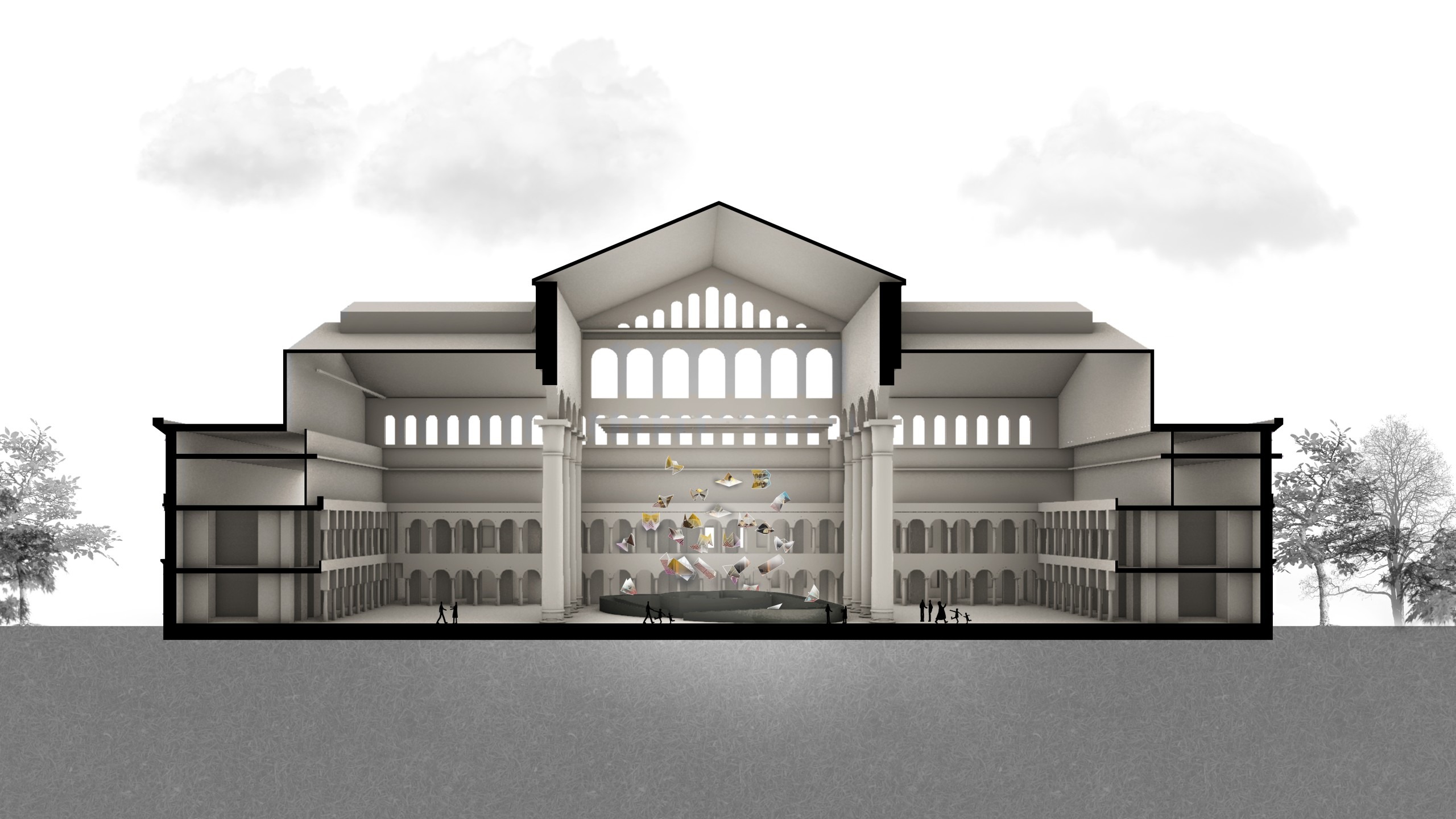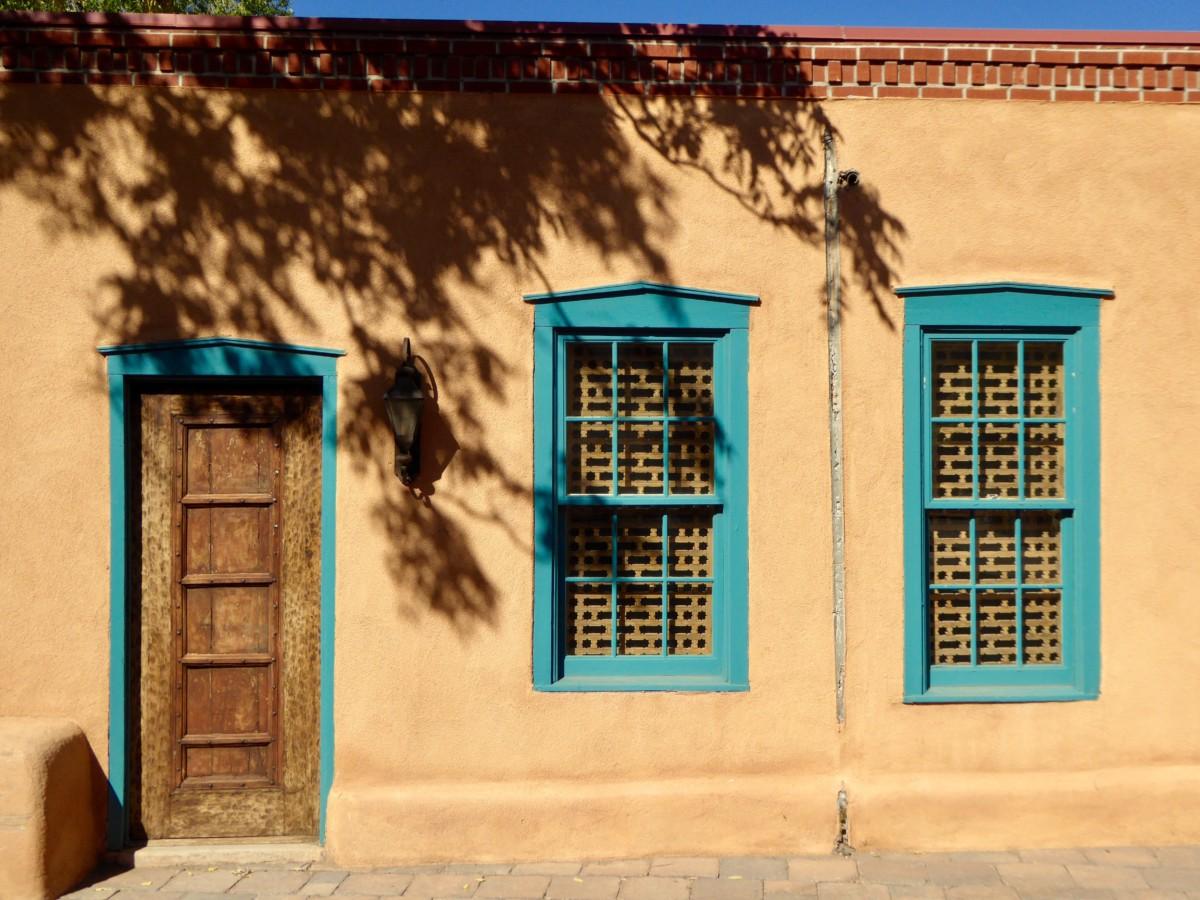Editor’s note: Gifted architect Suchi Reddy’s very cool installation at the National Building Museum, ‘LOOK HERE,” will be on display there just a few more days – closing on Sept. 4. Here’s a re-post of our coverage from early June. Don’t miss it!
After a three-year, pandemic-induced break, the National Building Museum’s summer installation is back.
The first was by Bjarke Ingels Group, in 2015. Next up was James Corner Field Operations. In 2017 it was Studio Gang. Snarkitecture took the stage in 2018. The last, in 2019, was by Rockwell Group.
On July 1, visitors to the museum’s Great Hall were craning their necks to gaze up at Reddymade’s “LOOK HERE” floating above their heads.
That’s because architect Suchi Reddy has suspended her installation from the ceiling – a first for the museum. “They’re oversized mirrored structures, shaped like those cooty-catchers or fortune-tellers, reminiscent of childhood toys,” says Cathy Frankel, vice president for exhibitions and collections at the museum. “They’re mirrored pieces that are reflected off each other.”
Reddy created 21 of the origami-like structures, ranging from six to eight-and-a-half in diameter. They’ll reflect off the building, each other and people on the floor. All the while, the sun will be moving through the space, morning to evening.
“An oval ramp rises up five feet so people can get closer to them,” she says. “They’ll see inscriptions of democratic ideals like the 1964 Civil Rights March, the Climate March of 2014 and the Black Lives Matter March of 2020.”
The structures themselves are made from a lightweight, mirrored material called Luminux,. “It’s a beautiful mirrored surface, one-eighth of an inch thick, and very clear,” she says. “The precision of the reflection is beautiful, and you can print on it.”
As always, the assignment was to create something beautiful, transformative and unexpected for children and adults. Sustainability is important also, and materials must be recyclable. Calling attention to the grandeur of Montgomery C. Meigs’ 1887 building was a factor too.
“It’s an overwhelmingly beautiful building but also overwhelming at times, so this breaks it up so people can see how the building is put together,” she says. “We want people to look at how the building is made and understand it – because ours was done in a really lovely way.”
And it’s got potential for night-time use too. “Suchi said it can be a disco at night,” Frankel says.
And no mirrored and prismed ball will be needed.
For more, go here.





